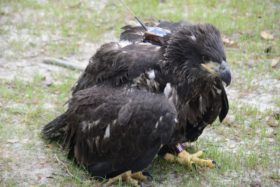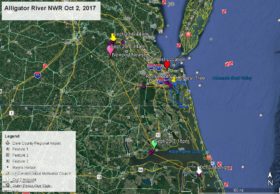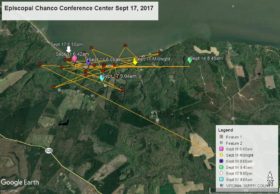What Size are Bald Eagle Eggs?
Camellia Returns to Great Neck in Va Beach
March 2, 2011Camellia on Elizabeth River in Va Beach
March 5, 2011

A question asked by WVEC eaglecam viewers is “What size are the eagle eggs?” In 2008 it was necessary to remove the first two eggs laid by the female bald eagle at the Norfolk Botanical Garden nest. The eggs were taken to the Virginia Institute of Marine Sciences to be examined. While I had the eggs they were weighed and measured, and I took photos of them. The two eggs were nearly the same size and weight – 735cm (2 7/8 inches) by 565cm (2 1/4 inches) weight 126.1 grams (4.5oz), and 740cm (2 15/i6 in) by 565cm (2 1/4in) weight 122.4 grams (4.3oz). The photos above show the comparable size to two very familiar objects, a tennis ball and a hard ball (also called a baseball).




3 Comments
The primary difference is that bald eagles belong to a group of “sea” eagles who live in or near aquatic environments and are piscivorous (fish eaters); golden eagles belong to an entirely different group of eagles known as true or “booted” (legs with feathers versus scales) eagles and are upland eagles, meaning they are not near water; they hunt upland mammals mostly versus fish.
Why did the eggs have to be removed? Very interesting to see their size.
Response – After the two eggs were laid a third adult eagle showed up and drove off the nesting female, then the male left. The intruder also left and after a week of being uncovered the decision was made to remove the eggs. A week later the original pair returned and laid a second clutch of eggs. The first two were cruched. The third egg became the eaglet named Buddy that developed avian pox and is now a permanent resident at the Wildlife Center of Virginia.
It is just amazing that eagle eggs are the size of tennis balls!